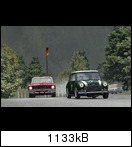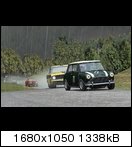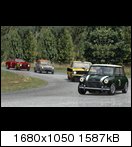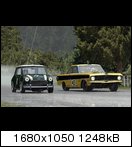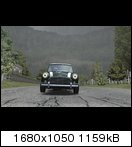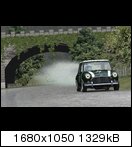.jpg)
OFFICIAL PRESS RELEASE
Stuttgart, Germany, Jul 19, 2002
* The mastermind: B�la Bar�nyi and the invention of the crumple zone.
* Rigid passenger cell, interior designed so as to reduce injury hazards in an accident: Mercedes-Benz 220, 220 S, 220 SE model year 1959
* "Terracruiser": B�la Bar�nyi�s portion to the company and other milestones
On January 23, 1951, Daimler-Benz AG applied for patent number DBP 854.157, using the unadorned description of "Motor vehicles especially for the transportation of people". Behind this was concealed no less than the invention of the crumple zone. A patent which in the following decades revolutionised the entire automotive industry and became the decisive factor in "passive safety". In more recent times, it has even been applied in railway locomotive and car design.
The ingenious mastermind of the idea was B�la Bar�nyi for whom the maxim of the time � "a safe car must not yield but be stable" � was completely inappropriate. He was the first to discover that in a collision, kinetic energy must be absorbed through deformation in order for the occupants to be protected. He logically split the car body into three "boxes": a soft front section, a rigid passenger cell and a soft rear section. The patent was granted on August 28, 1952.
Rigid passenger cell, interior designed so as to reduce injury hazards in an accident
On a global scale, Bar�nyi's safety bodywork made its debut in production cars in the first six-cylinder Mercedes-Benz 220, 220 S and 220 SE models of 1959, their most striking feature being distinctive tail fins. Developments under the engine hood were equally revolutionary: the steering gear moved far to the rear and the auxiliary units were arranged in such a way so as not to form blocks with each other in the event of a collision, but rather to slip past one another, permitting more effective crumpling of the bodywork. Inside this Mercedes, the most significant improvement was only to be detected after giving it a second look: for the first time ever, the interior was completely redesigned so as to reduce the injury hazard in an accident.
Hard or sharp-edged controls were replaced by yielding, rounded or recessed units, combined with recessed door handles, a dashboard which yielded on impact, padded window ledges, window winders, armrests and sun visors and a steering wheel that featured a large padded boss. Under heavy impact, the rear-view mirror was released from its bracket. In 1961, anchorage points for seat belts were fitted as standard in the "tail fin". Lap belts were available from 1957, and the first diagonal shoulder belts appeared in 1962. Round-shoulder tyres also made their debut on this car.
"Terracruiser": B�la Bar�nyi�s portion to the company and other milestones
In October 1948, engineer and inventor B�la Bar�nyi signed his new employment contract with Daimler-Benz AG, where he had worked previously between 1939 and 1946. He contributed his concept for a "car of the future for the two-to-three litre class", the "Terracruiser" as he called it, which had been in development for several years.
Striking at first glance on this design was the car's body, which was split into three sections, giving it a front end, a passenger compartment and a tail. The two outer sections were strictly separated by the passenger cell which itself was flexibly mounted in a "cradle position". This mounting was to absorb vibrations as well as offer protection in the event of a collision. One other thing: to protect the driver as effectively as possible in a lateral crash, the driver�s seat, including all instruments and controls, was arranged centrally in a complex "bridge". The Terracruiser was designed as a three-box body with outstanding aerodynamic efficiency.
Bar�nyi developed a huge range of trailblazing safety elements alongside the Terracruiser. These include such essentials as the safety steering column, the steering wheel impact absorber, the "disappearing windscreen wiper" and, highly important for interior safety, the protective side molding. His modular design principle, which he developed so early on, has become relevant only recently. By the end of his professional career, the restless B�la Bar�nyi was able to call 2,500 patents his own.


.jpg)
.jpg)
.jpg)
Copyright � 2008, fastfivecars. All rights reserved.







.jpg)
.jpg)
.jpg)
.jpg)
.jpg)
.jpg)
.jpg)
.jpg)
.jpg)
.jpg)
.jpg)
.jpg)
.jpg)
.jpg)
.jpg)
.jpg)
.jpg)
.jpg)
.jpg)
.jpg)
.jpg)
.jpg)
.jpg)

.jpg)
.jpg)
.jpg)
